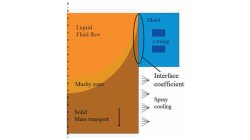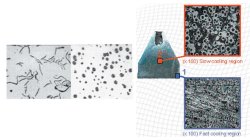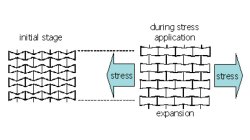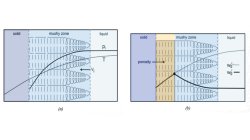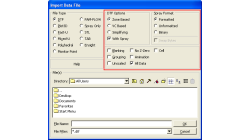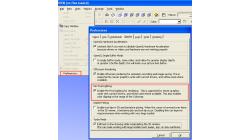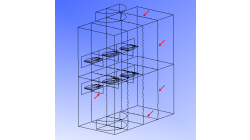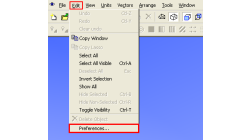- Home
- Resources
- Tips & Tricks
Tips & Tricks
Why is it important to have coupled stress calculations?
Casting process issues related to hot tearing and cracking of the casting, thermal fatigue of dies and prediction of the final shape of a part are a challenge for foundries. Powerful, multi-physics simulation tools are now available to address them. This e-tip will consider the advantages of a fully coupled thermal, fluid flow and stress analysis of casting, in particular in view of the above mentioned challenges.
Casting
Thermomechanical modelling of continuous casting
Two application examples are showing new possibilities to take into account stress and deformation by the simulation of continuous casting processes. The variability of the presented examples prove that the proposed method is not limited to a certain class of applications, dimension and alloy composition. Since the gap formation can now be taken into account, the results are expected to be much more precise. This approach opens a wide field of application in order to better understand and control the heat transport in continuous casting processes.
Bohus
Ulrych
Casting
Modeling the solidification of cast irons
Successfully modeling solidification of Cast Iron is of great help for the foundries to reduce their production costs and thus to increase their profits. If the basic physical solidification phenomena are correctly modeled by the simulation tools mold risering can really be optimized.
Casting
Why it is useful to describe problems in terms of non-dimensional parameters and which ones are the main important in solidification?
A dimensionless quantity is a quantity without any physical units. Such a number is typically defi ned as a product or ratio of quantities which do have units, in such a way that all units cancel. Dimensionless quantities are widely used in the fields of physics and engineering but also in every day life.
Casting
Influences of Solidification Length and Pressure Intensification on Gas Shrinkage Microporosity in Casting Components
Porosity in castings is a major defect since it affects the mechanical properties. In particular porosities are sites for the initiation of fatigue cracks. Therefore, the reduction of porosity fraction and size, the control of porosity distribution and morphology are crucial for the optimization of mechanical resistance of as cast components.
Casting
CFD-VIEW: Working with cell-center data in batch mode
Many improvements have been made in CFD-VIEW that allows the manipulation of cell-center data. The latest cell-center data additions implemented in CFD-VIEW V2011.0 include, for example, support for the MinMax Probe and the Calculator.
Abraham
Meganathan
CFD
"Per Pixel Lighting" display option in CFD-VIEW
When visualizing CFD solutions, it is often of interest to see a particular range of variable values, and it is therefore useful to be able to clip the surface coloring to that range, as to obtain a clearer view of the areas affected by the variable.
Abraham
Meganathan
CFD
Visualizing decomposed model without zonal interface outlines
Running a simulation in parallel allows quicker turn around for larger and complex problems. Such parallel jobs require the computational domain to be decomposed into multiple zones. Such a multiple-zone file may be inconvenient to post-process in CFD-VIEW because zonal interface outlines will be visible and the original surfaces would have been split. As depicted in figure 1 below, these outlines can be numerous and may therefore hinder the clarity of the model.
Abraham
Meganathan
CFD
Visualizing particle size effect on Spray particle trajectory
When analyzing flow vectors, one can get a general trend of the direction of the flow and locations of recirculation. But what if you need to specifically know where a particle will end up? Maybe release points need to be studied. Then, the size and mass can make a difference in the path a particle travels.
Abraham
Meganathan
CFD
Using Macros in CFD-VIEW
In some cases, you might have to perform the same task several times to post-process your results in CFD-VIEW. This can happen for example when you are running a parametric study and need to extract the same information from all the solution files. In this case, it might be time-saving to use the Macro option of CFD-VIEW, especially if obtaining the information necessitates many operations.
Abraham
Meganathan
CFD

